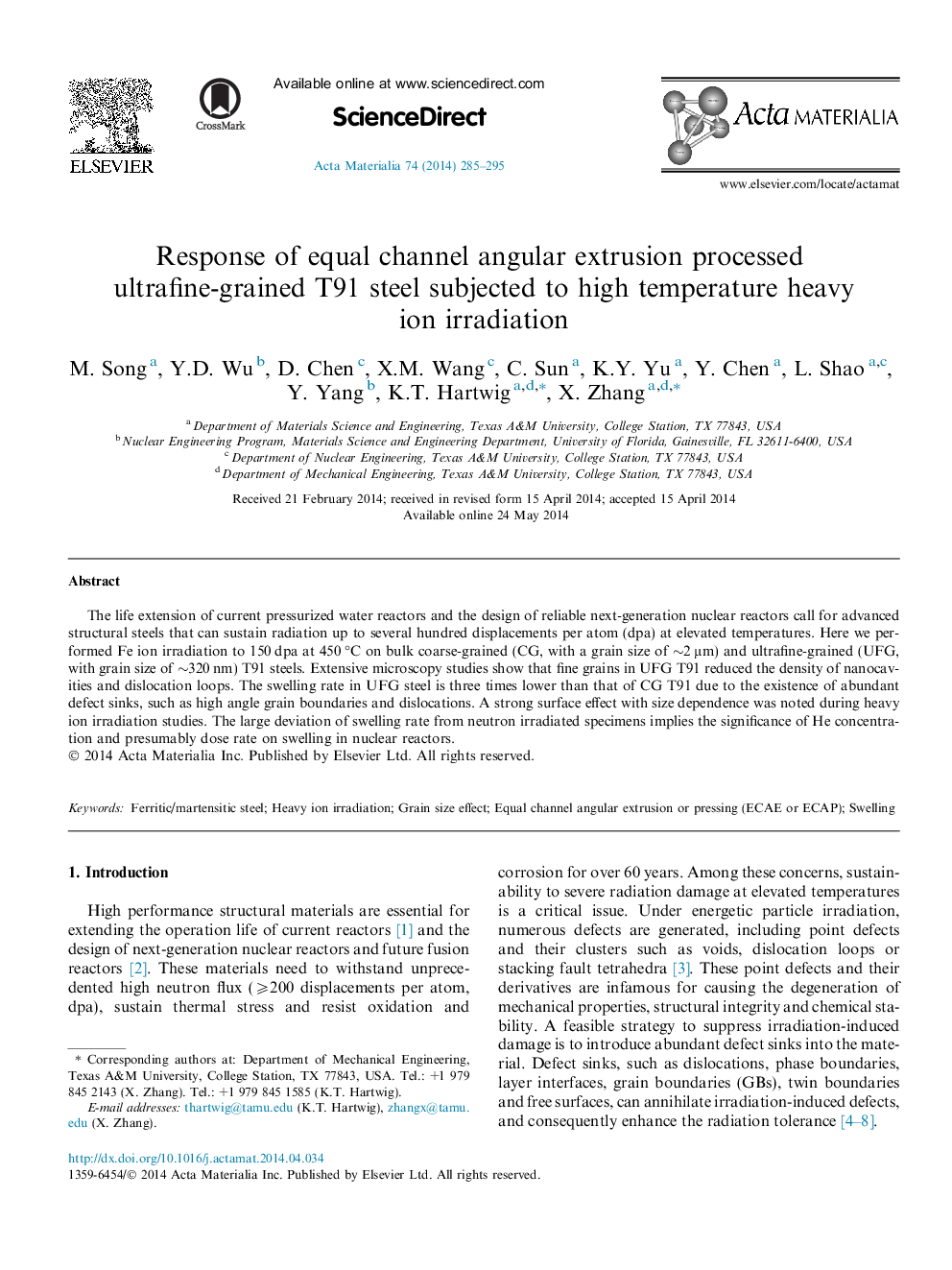| Article ID | Journal | Published Year | Pages | File Type |
|---|---|---|---|---|
| 7881791 | Acta Materialia | 2014 | 11 Pages |
Abstract
The life extension of current pressurized water reactors and the design of reliable next-generation nuclear reactors call for advanced structural steels that can sustain radiation up to several hundred displacements per atom (dpa) at elevated temperatures. Here we performed Fe ion irradiation to 150 dpa at 450 °C on bulk coarse-grained (CG, with a grain size of â¼2 μm) and ultrafine-grained (UFG, with grain size of â¼320 nm) T91 steels. Extensive microscopy studies show that fine grains in UFG T91 reduced the density of nanocavities and dislocation loops. The swelling rate in UFG steel is three times lower than that of CG T91 due to the existence of abundant defect sinks, such as high angle grain boundaries and dislocations. A strong surface effect with size dependence was noted during heavy ion irradiation studies. The large deviation of swelling rate from neutron irradiated specimens implies the significance of He concentration and presumably dose rate on swelling in nuclear reactors.
Related Topics
Physical Sciences and Engineering
Materials Science
Ceramics and Composites
Authors
M. Song, Y.D. Wu, D. Chen, X.M. Wang, C. Sun, K.Y. Yu, Y. Chen, L. Shao, Y. Yang, K.T. Hartwig, X. Zhang,
